Images from walks along two favorite water sources
I visited Sweetwater Wetlands and the Sewailo Golf Course recently
Ruddy Ducks stay year-round in the many ponds and lakes at Sewailo. Now, during the breeding season, the males develop that "ruddy" plumage. Their face turns white and the surface of their beaks turn that pretty pastel blue shade.
The Ruddy Duck species is in the genus of what is called "Stiff-tailed Ducks." All the ducks in that group have long, stiff tail feathers as their group name implies. Usually they hold those tail feathers up. The Ruddy below is resting his bill on his back but his tail feathers are sticking up in the air.
This dragonfly is colored so that it practically disappears on the creosote bush. This is a female Comanche Skimmer. I saw it fly into the creosote but it took a long time for me to find her resting on and parallel to the branch.
There were quite a few dragonflies at or near the water on the course. There was a pair of these female Marl Pennants on nearby dead plant stalks. Generally the male dragonflies will spend more of their time near water, while the females will tend to stay away from the water until they are ready to breed.
This male Vermilion Flycatcher, as a friend says, is "fixing to be a man." Its feathers are slowly turning red as it matures.
Meanwhile, at Sweetwater Wetlands, duckweed has spread throughout most of the water. This edible plant is generally not dangerous for ducks and is a natural part of their diet. I like how this mallard is wearing some duckweed on its feathers and bill.
Another Mallard was completely out of the water. Both male and female Mallards have this wing patch of iridescent blue feathers bordered by black and white. As I've mentioned before, the blue coloration in bird feathers is not due to pigments, but rather due to microscopic structures on the feather surfaces that scatter light, creating the vibrant blue appearance.
A male Ladder-backed Woodpecker was tapping away on a willow tree at the water's edge. This small woodpecker is a desert resident, but is smaller and quieter than our loud and ever present Gila Woodpeckers.
A really exciting find at Sweetwater was this Yellow-billed Cuckoo. This species is yet another summer resident of southern Arizona. They are here for just a short time each summer. As big and conspicuous as they are, and as loud as their calls are, they are very sneaky and difficult to find in their usual riparian habitat.
The other "cuckoo" in the Southwest has a more public presence. Our Greater Roadrunners are in the cuckoo family as are the Yellow-billed Cuckoos. They are the only two cuckoos in the Southwest. Tucson Bird Alliance tells us how special this Yellow-billed Cuckoo is.
I've caught glimpses of the Yellow-billed Cuckoo over the years, have heard their calls, but had never gotten such a clear and long look at one until this one. It made my day!


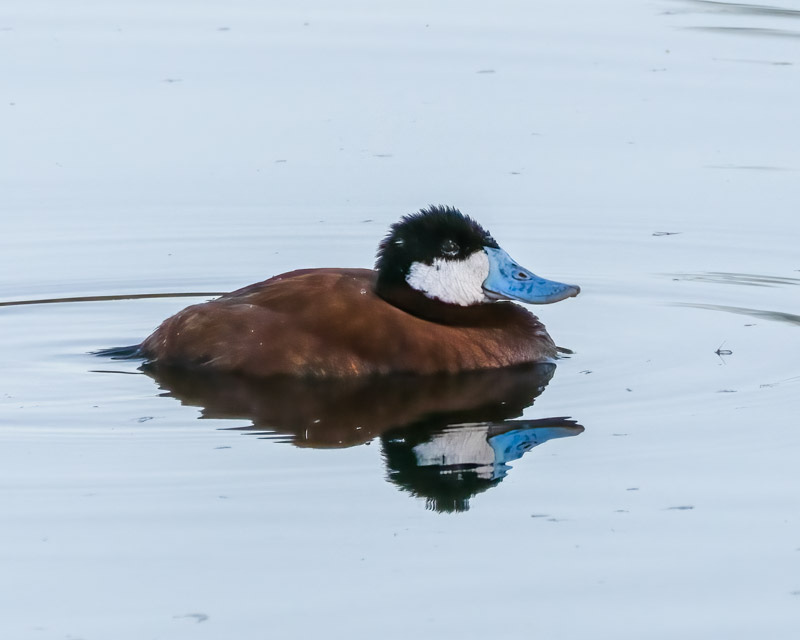
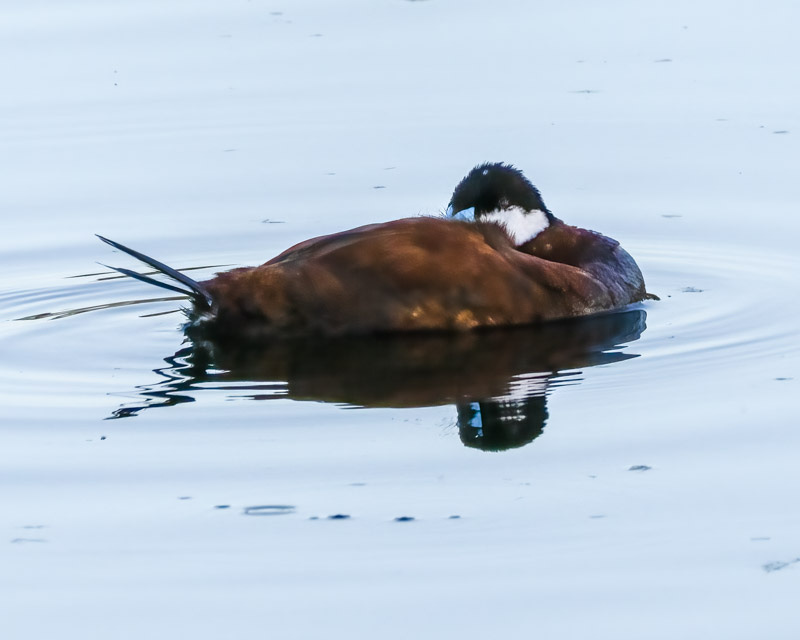
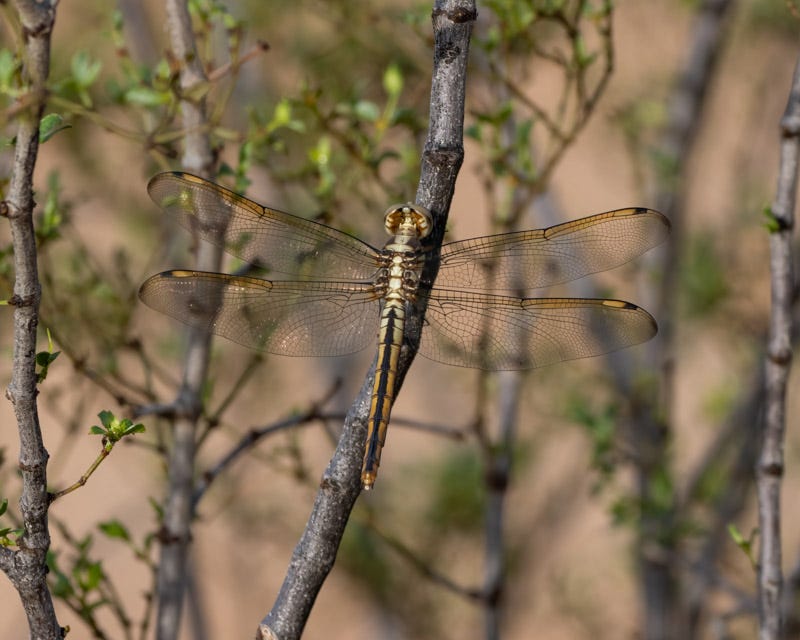
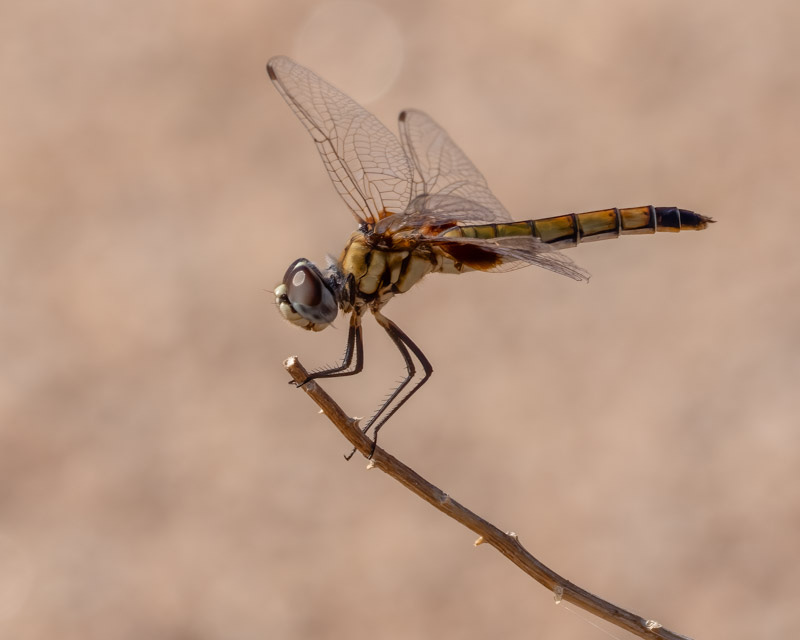
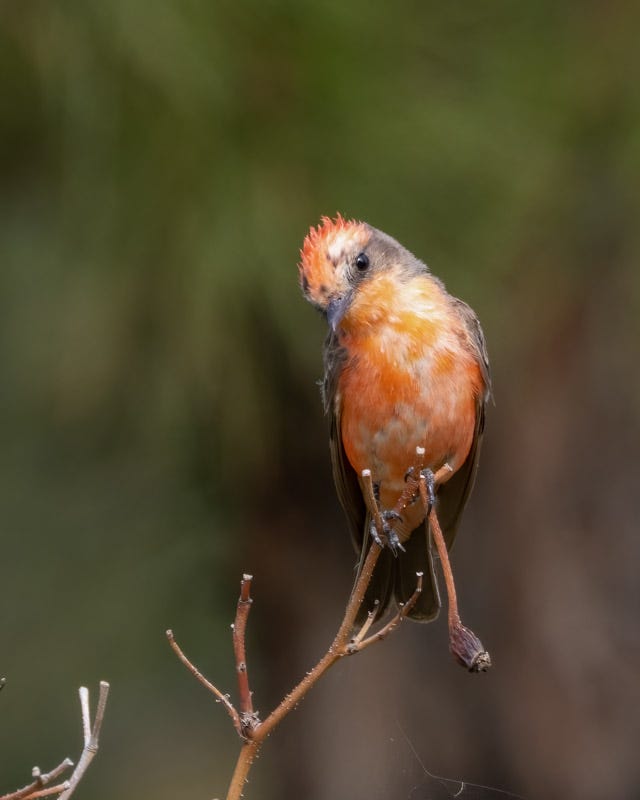
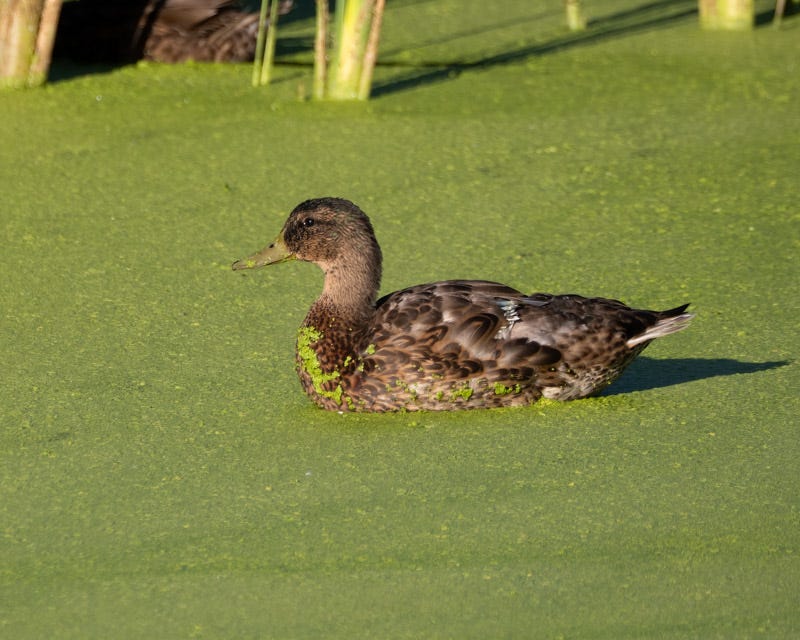
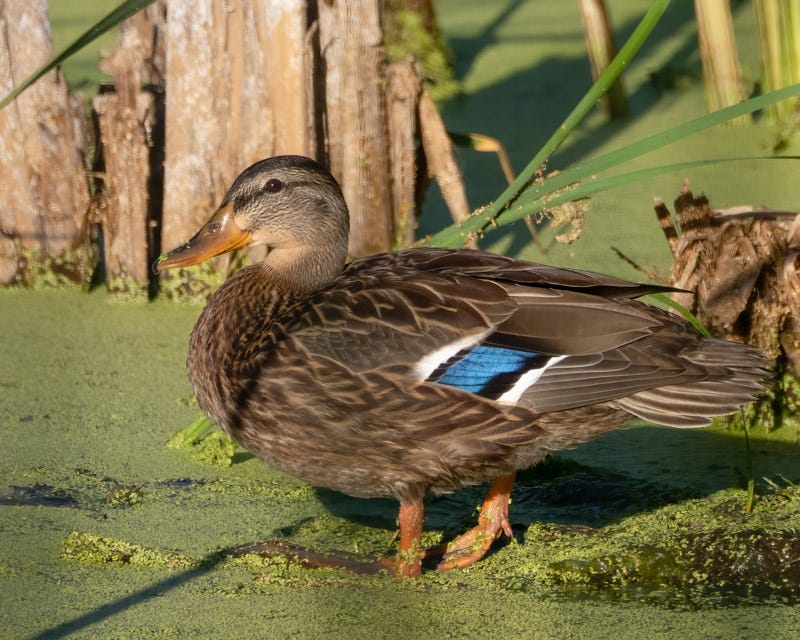
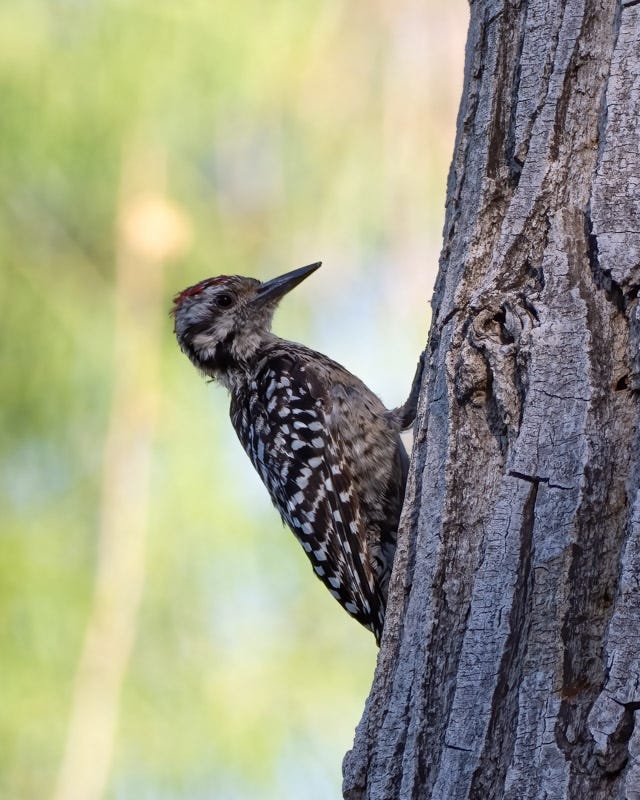
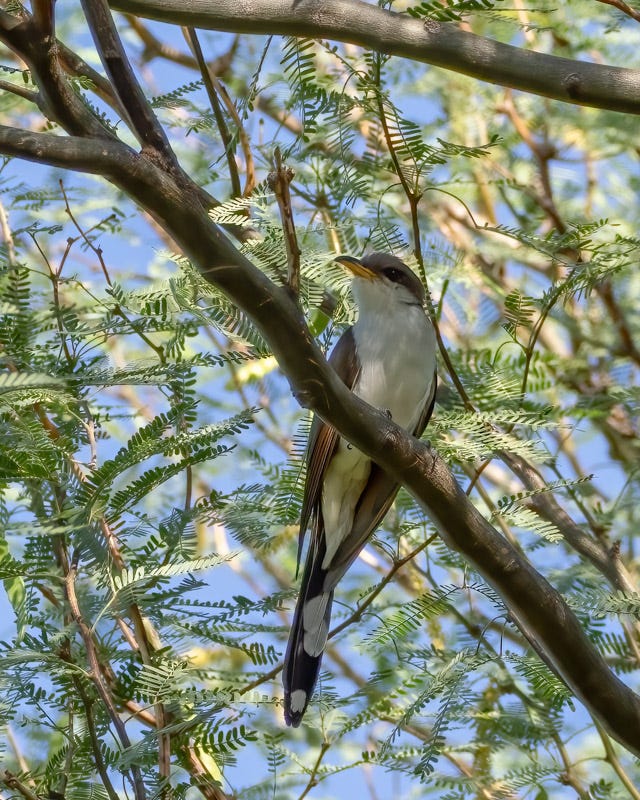
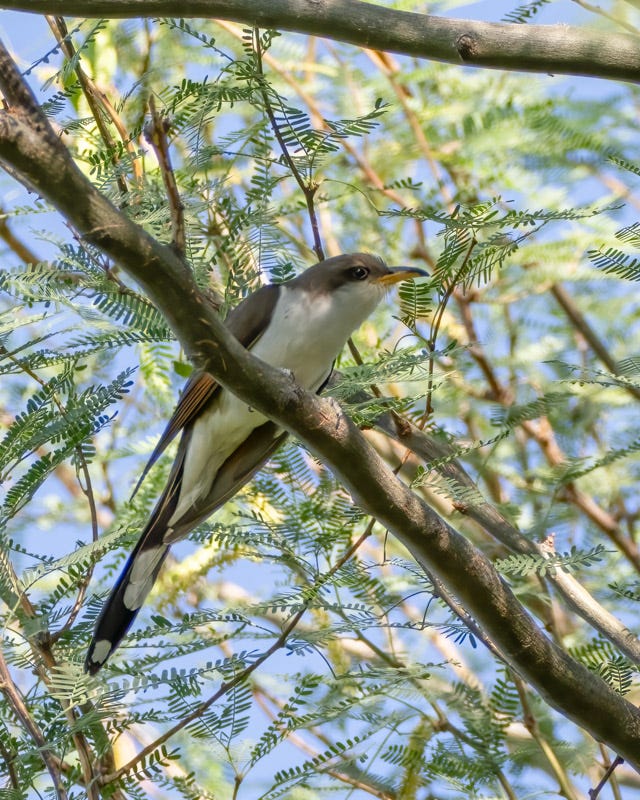
Nice job, Dan. Congratulations on the Yellow-billed Cuckoo. That was quite the find and I loved your photos of it.
I especially love the blue beaks, the male Vermilion Flycatcher and the duckweed.